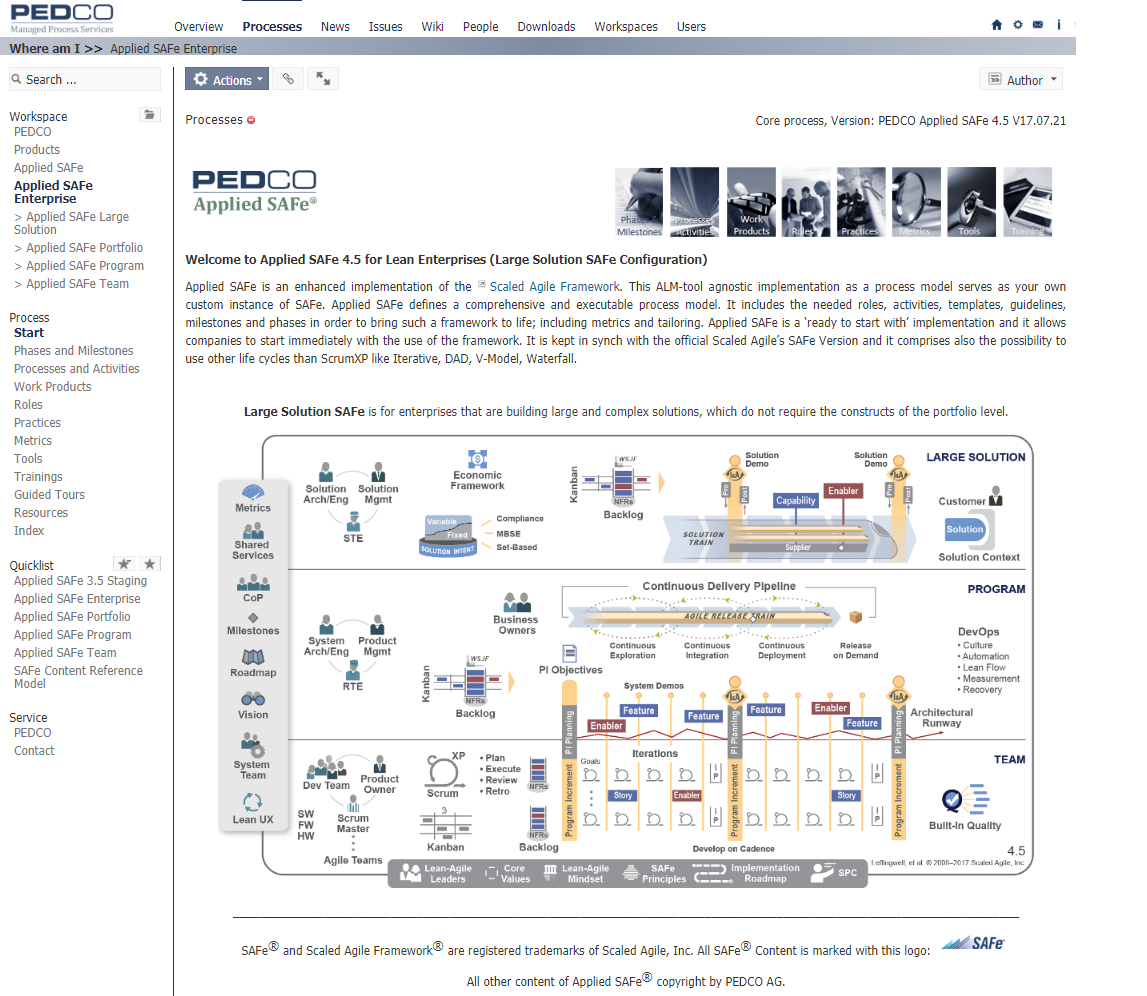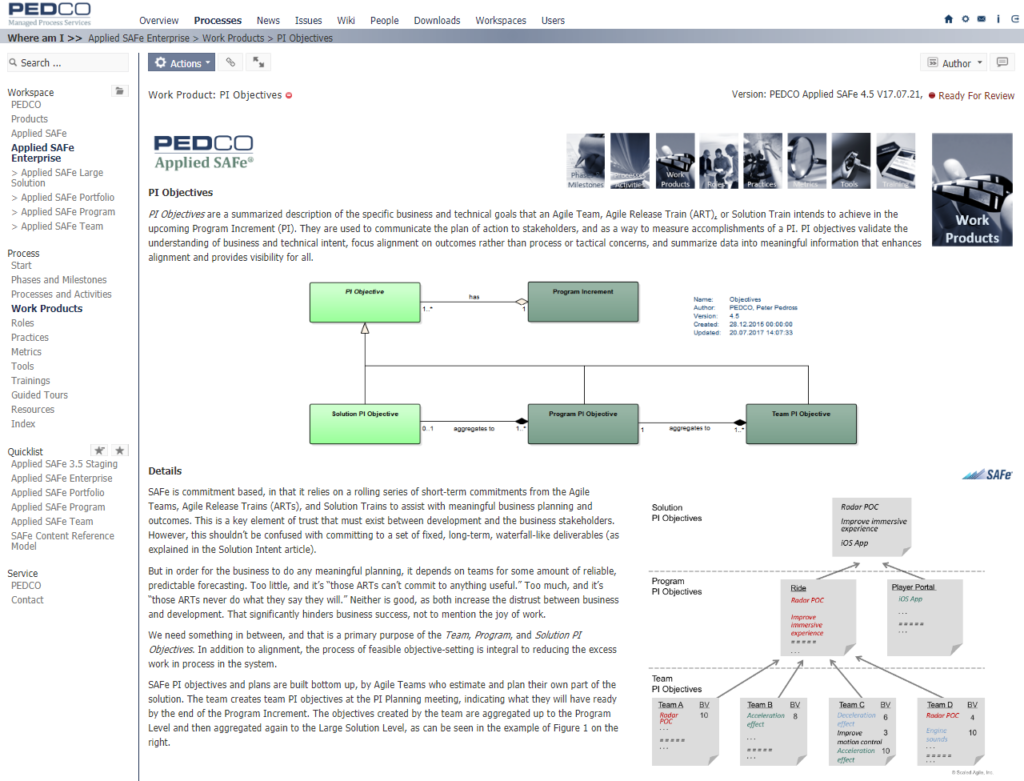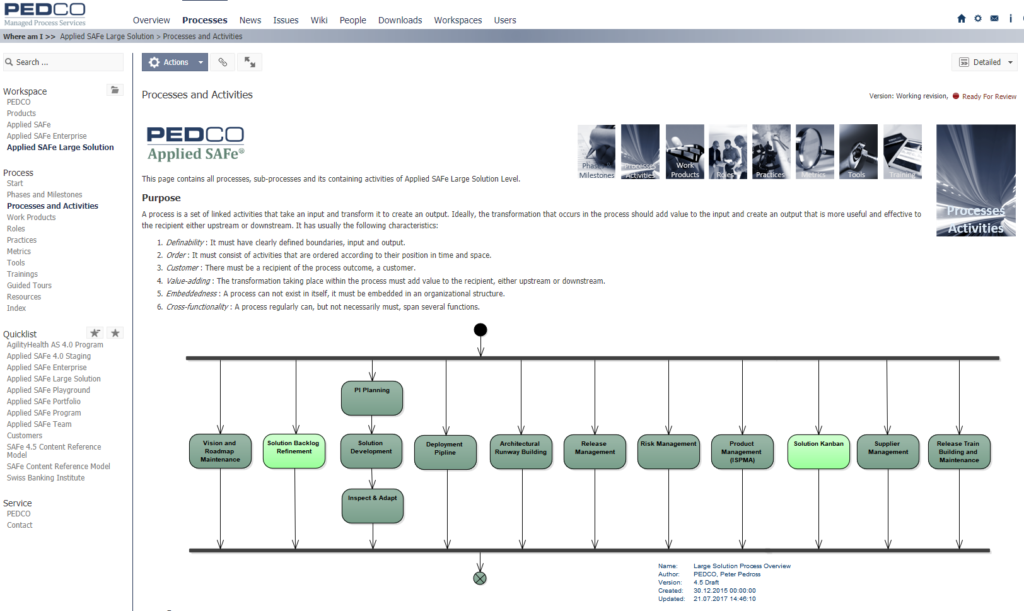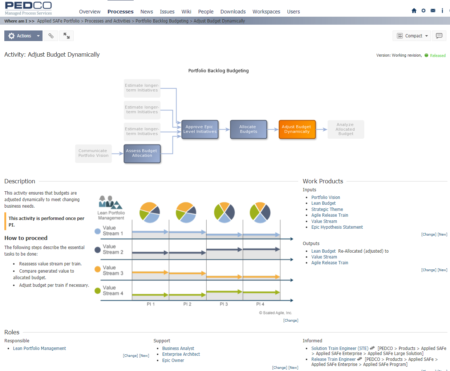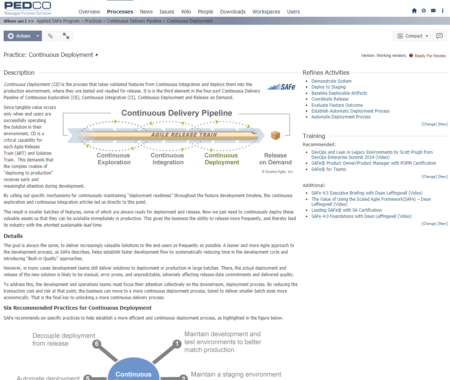As of August 24th, PEDCO released the new version 4.5 of its product Applied SAFe. Applied SAFe® is our fully fledged implementation of the Scaled Agile Framework (SAFe®) as a process model.
In this recorded webinar, we put the emphasis on new levels, configuration and the implementation of SAFe 4.5, including new roles, tailoring, processes, work products and practices.
Watch the recording of this past webinars to get a first impression on new features, capabilities, configurations and customization of SAFe.
Applied SAFe serves as your own customizable instance of SAFe®. It includes all roles, activities, templates, guidelines, milestones and phases as defined by the SAFe® methodology in order to bring the framework to life; including metrics and tailoring. Applied SAFe is a comprehensive implementation of SAFe as a process model with a sophisticated customization mechanism that allows to instantiate each SAFe level independently but in line with the intended new SAFe configurations. For each of your endeavors just select the chosen SAFe configuration (e.g. Essential SAFe) and Applied SAFe tailors all elements accordingly. Want to customize more specifically? Over 300 pre-built tailoring options give you the flexibility you are looking for besides of engineering your individual extensions. Share your knowledge via the integrated practice library and benefit from additional capabilities to reach compliance requirements like Automotive SPICE, HIPPA, CTR-180 (FDA), SOX, CMMI and many more while executing your lean-agile SAFe endeavor. To learn more about Applied SAFe 4.5 register for of the webinars above or visit the PEDCO booth at the 2017 SAFe Summit or the Agile in Automotive 2017 in Germany, where we will also run a tutorial on ‘Scaled Agility in Regulated Environments.
Please find below some screen shots of Applied SAFe 4.5
 Work Products PI Objectives
Work Products PI Objectives
Work Products (Documents, Software, Models, etc.) are the work results of a process and therefore the most important element of the process.
- Each activity, that is performed, leads to the creation or revision of at least of one work product.
- In order to ensure the creation and the quality of the work products, roles are responsible.
- Between the Work Products, there additionally exist dependencies. That means, in order to be able to create one work products, certain other work prodcuts may be required.
Hints and tricks for modelling:
- Work products shall include an example within its resources tab.
- A work product is always named in singular.
- Do not consider work products with names like ‘… list’.
 Processes of Large Solution Level
Processes of Large Solution Level
A process (graphical represented) is a logical sequence of related activities to create a performance or a transformation of a work product.
The central elements therefore are phases, roles, work products and practices. They describe
- what has to be done (which documents or work products have to be created)
- when (in which phases)
- by whom (which roles are involved)
- and how (which practices have to be applied)
The level of detail should not go beyond what adequately trained professionals need to see or to understand. Expected are the essential activities to produce the relevant work products. Describe the “happy path” to produce the relevant work products without any exceptions or error handling.
 Activity on Portfolio: Adjust Budget Dynamically
Activity on Portfolio: Adjust Budget Dynamically
An activity is manual or semi-automated work step to create a performance or a transformation of a work product.
Activities are the main element for process users; these descriptions have to be understandable and must contain:
• Role according the RASCI
• Phase performed
• Predecessor and successor activities
• Input and output work products.
Activities do not contain any secondary information like ‘How to …’.; this belongs to a practice.
 Practice on Program: Continious Deployment
Practice on Program: Continious Deployment
Practices describe how something can be done, in contrast to activities within processes which tell you what has to be done. A practice is used to refine an activity; it is a profound description of how to do something.
A practice is a method or technique that has consistently shown results superior to those achieved with other means, and that is used as a benchmark. In addition, a practice can evolve to become better as improvements are discovered.
Practices indicate also which training you should attend.
